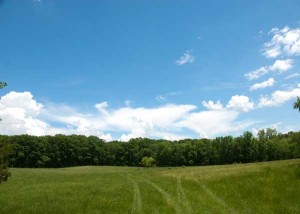“Are you looking for a bull?” My mind thought “no” as my voice said, “Tell me about him.” I was killing some time at a purebred association’s sanctioned auction and ranchers were standing by to answer questions about their consignments. “How much does he weigh”, I asked. The response was between 1800 and 2000 pounds, however the rancher didn’t know for sure because the bull was too big for the scales. Don and I have owned a 2000 pound bull and this big boy before me, with a neck the size of an oak tree, had to exceed that. To the bull’s credit though, I was told that he was “as docile as can be”. That I did believe.
Across the alley and one pen down was another bull, much younger, though I didn’t note the exact age. I did note that the sign attached to the pen said “no creep”. As tall and skinny as he was, he could have used a snack. I wondered to myself if the seller thought this young bull could be raised on grass alone or if he was selling with the anticipation that the bull would receive supplementation.
Speaking of frames, large and tall was the theme for the cows being offered. I stand about 5 feet 7 inches and some of those girls’ hip heights were at my shoulder. That would be a frame score of around 8. Many of these cows were filled out with calves by side. How were they maintaining their body scores? Grain. The ranchers were freely talking about the grain being fed on their farms. At what cost I wondered. No doubt several of them raised their own grain but there is still cost associated with that.
Don and I started out with large-framed cows. Their EPDs looked good and we felt comfortable with the seller. We soon found out though that large frames and low input, grass fed operations aren’t very profitable. On grass alone, the cows would not always breed back timely and on two occasions, needed birthing assistance. We are working toward cattle with smaller frame sizes with no regrets. Our bulls aren’t too big and heavy for heifers. The cows breed back, with a calf by side, and have good body condition.
Feeding grain might be profitable for others; I don’t see their ledger pages. I do know that feeding grain costs money whether harvesting or purchasing. As far as cow size goes, I’m not interested in spending time monitoring cows for birthing assistance. Large dams and sires produce large progeny. As a side note, at least one animal was pooping “money”. I cleaned my boots before climbing into my vehicle and saw that whole corn kernels were stuck to the bottom along with the manure.
 Also new to the garden this year is that Don planted basil, cilantro and mint. He will use the basil and cilantro in tomato-based sauces and salsas. The mint will most likely be used for tea. As an added bonus, the white blooms of the basil plants are attracting humming birds.
Also new to the garden this year is that Don planted basil, cilantro and mint. He will use the basil and cilantro in tomato-based sauces and salsas. The mint will most likely be used for tea. As an added bonus, the white blooms of the basil plants are attracting humming birds.
